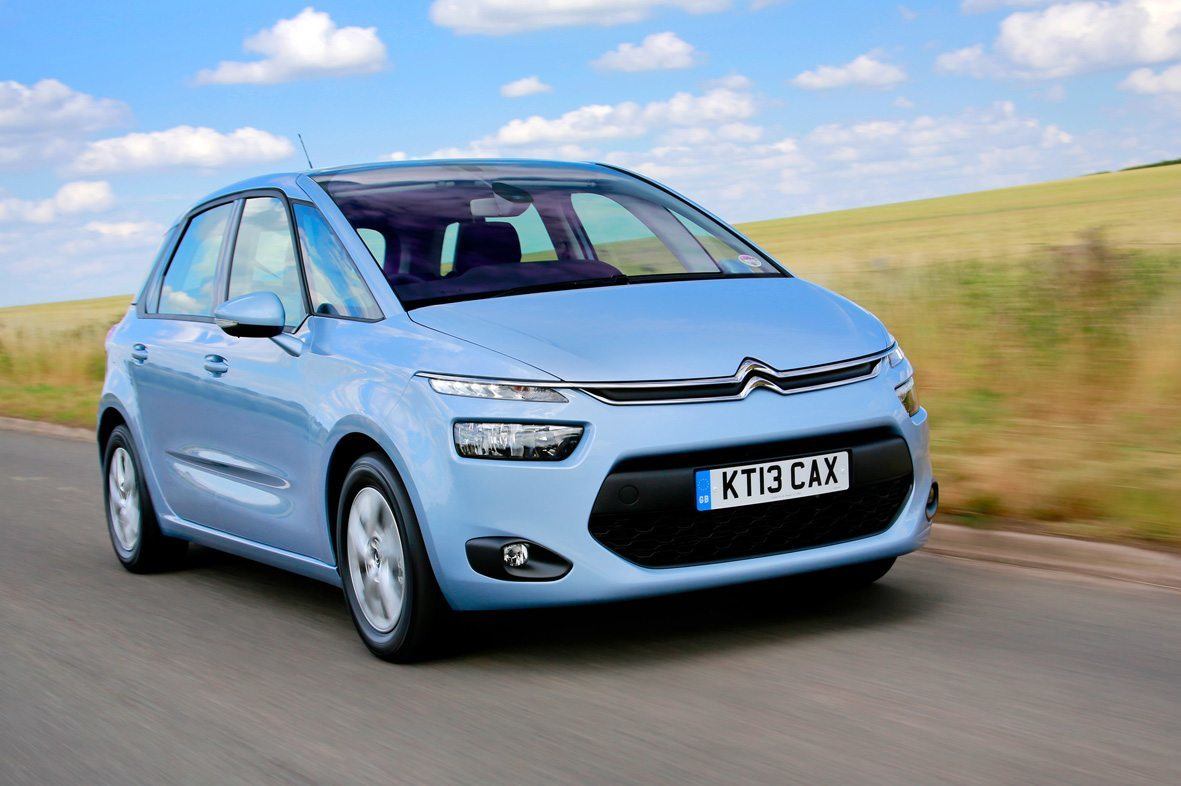Citroen C4 Picasso (2013-2018) Review
Written by David Ross
Quick overview
Pros
- Versatile and well-thought-out interior
- Comfortable ride
- Neat handling for an MPV
Cons
- Clunky manual gear change
- Fiddly infotainment system
- Panoramic windscreen is more of a gimmick
Verdict: Is the Citroen C4 Picasso a good car?
"The Citroen C4 Picasso is one of the few compact MPVs that consistently offered something a little different. Where many rivals delivered relatively dull boxes, the C4 Picasso was more interesting to look at both inside and out, and that translated to impressive practicality and a more desirable car. It does everything you could reasonably ask of an MPV without feeling like a glorified van with windows."
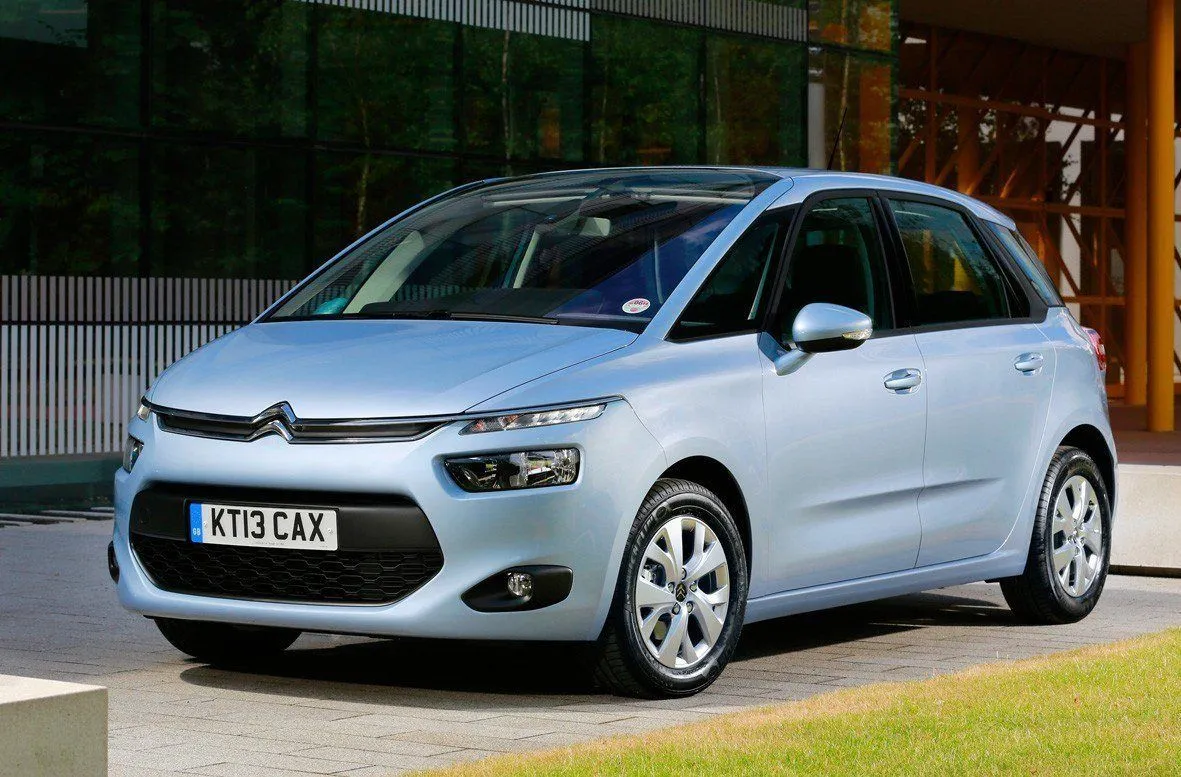
Citroen has always loved people carriers. The French firm can't seem to stop making them - it's probably what it has become best known for in recent years with its range of Picasso models.
In this Citroen C4 Picasso review, we look at the last ever C4 Picasso, before Citroen switched to the SpaceTourer and the model was dropped completely.
The Xsara Picasso represented affordable and practical family transport. There were few frills, but there was also rarely a time when you couldn't get a discount on one. It became the DFS of cars. But much has changed since then as Citroen attempts to shake off its 'value' tag and aim for an association with style and innovation. This is where the C4 Picasso came in.
Citroen certainly got the styling right. Especially from the front with its smooth front end and slim LED daytime running lights gave it a cutting edge appearance. It's very different from other MPV designs yet is unmistakably a Citroen with an added premium feel.
Of course, what's most important for an MPV is practicality and space. Citroen has often led the way in these departments, and the C4 Picasso continued that. The first thing you'll notice is how light it is inside, helped by more than five square metres of glass, including a large glass roof and a panoramic windscreen. We weren't fans of the latter; if it was sunny, you were dazzled, but you could at least slide the sunblinds forward.
Looking for a used car for sale? We've got 100s of Citroen Approved Used Cars for Sale for you to choose from, including a wide range of Citroen C4 Picasso cars for sale.
Is the Citroen C4 Picasso right for you?
If none of the latest people carriers pique your interest, then the Picasso is worth a look. It offered lots of tech to boot, had a decent range of petrol and diesel engines, and had plenty of space inside. If you regularly do the school run, this is the car for you. Likewise, there are plenty of cheap examples on the second-hand market.
What is the best Citroen C4 Picasso model/engine to choose?
There were lots. So again, this comes down to what you'll need it for. The petrol lineup included a 108 and 128 bhp 1.2-litre and a 153 bhp 1.6 (increased to 163 bhp in 2015). There were two 1.6 diesels (89 and 113 bhp and a 2.0-litre with 148 bhp.
There were also five-speed and six-speed 'boxes and a six-speed automated manual. The VTR kicked off the range, while the VTR+ added automatic lights and wipers. The Exclusive was next, followed by the Exclusive+, the latter featuring adaptive cruise control and blindspot monitoring.
What other cars are similar to the Citroen C4 Picasso?
While the market may have moved away from MPVs to small SUVs and SUVs, the humble people-carrier still offers more space and makes a better family car for many buyers.
The Vauxhall Zafira and Ford B-Max were closest, but like the Picasso, these are long gone. Still, the used market's filled with them. The closest Citroen offers now is the e-SpaceTourer and C4. Similarly, there's the Volkswagen Touran, which looks sharper than before.
Comfort and design: Citroen C4 Picasso interior
"The C4 Picasso is great in the back with plenty of legroom - more than the previous model - and good head room too. It feels more spacious that something like a Ford C-MAX and the seats can be slid forward or back."
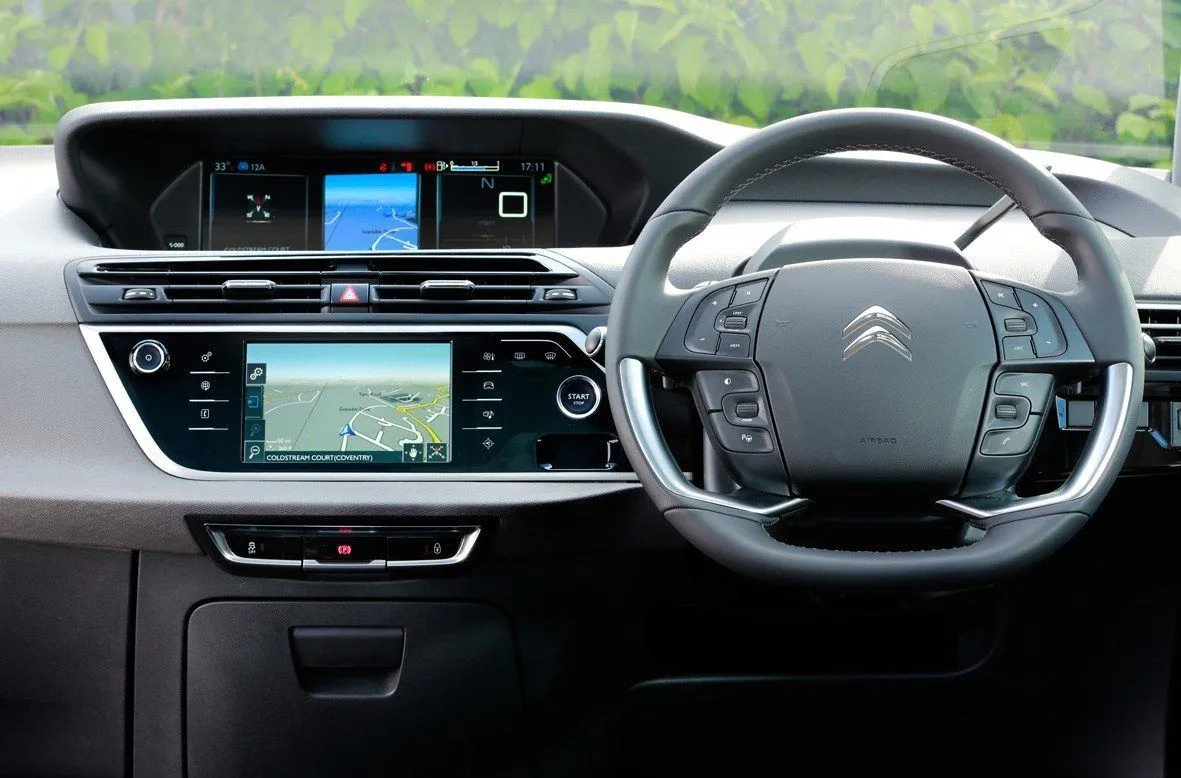
Those seats also tilt, which is a nice touch. All four doors open wide, making getting in and out or fitting child seats much easier than in a conventional hatchback.
The dash top cubby compartments may have gone, but there was still plenty of useful storage areas, including a huge compartment between the front seats, clever boxes under the floor in the back and trays under the front seats. But the best was the area in the centre dashboard, which was like a little media centre with a USB port, an aux-in and a plug socket. It was an ideal place for keeping phones and the like safe.
Quality and finish
Quality was drastically improved in newer models. The materials used felt much better, and the whole fit and finish was a big step up, with a better quality feel to the switches and controls. The design was much improved, and Citroen dropped the 'fixed-hub' steering wheel, which we were never convinced by, for a conventional one.
Infotainment: Touchscreen, USB, sat-nav and stereo in the Citroen C4 Picasso
Citroen was keen to big up new technology in the C4 Picasso, mainly the new media interface. This included not one but two colour screens. There was a seven-inch touchscreen lower down, in a nice gloss black surround, that controlled all the main functions like air con, stereo and the sat nav (if fitted).
Perched above in the dash was a huge 12-inch widescreen that displayed the speedo and rev counter (there were no conventional dials) and could be configured to show other information such as trip data or navigation.
It was a system that was easy to use thanks to clear icons on either side of the screen, but it could be a little fiddly. For instance, turning the air con up or down meant you'd go to the relevant screen rather than just pressing a button or turning a dial.
After 2016, many cars received Android Auto and Apple CarPlay integration.
Space and practicality: Citroen C4 Picasso boot space
The boot was large at 537 litres of carrying space, plus the new tailgate design, with the tail lights integrated, meant you could fit more in.
The seats folded flat, too, although there was no one-handle system for dropping them as in other MPVs. You pulled two levers on the seat - there was no way of folding them from the boot. The Citroen C4 Picasso's dimensions were 4438mm long, 2117mm wide and 1610mm tall.
Handling and ride quality: What is the Citroen C4 Picasso like to drive?
"The steering in the Citroen C4 Picasso feels quite artificial, but it's responsive and the C4 Picasso certainly handles well, with plenty of composure in corners and surprising amounts of grip."
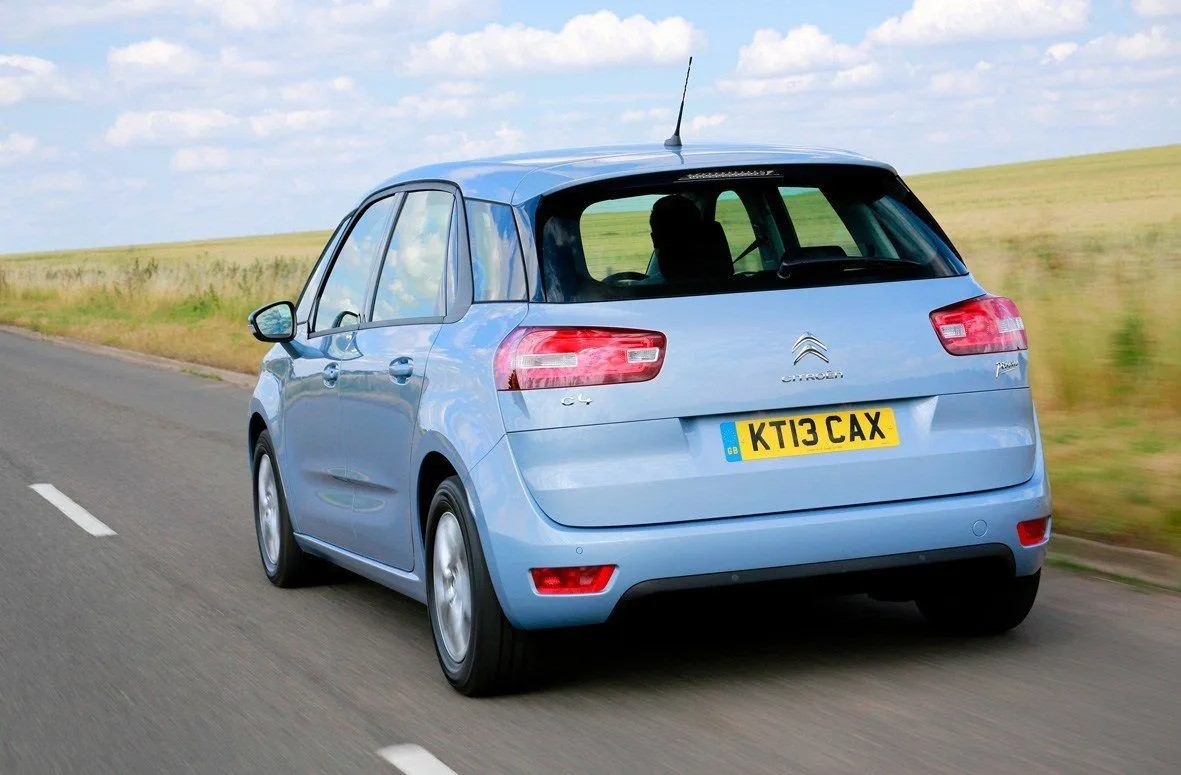
The latest C4 Picasso was miles ahead of the old model in this department, with impressive body control making it genuinely good to drive. The ride was impressive, and there was little wind or road noise on the motorway, so it was very relaxing on long journeys, helped by supportive seats.
In town, the clever thin windscreen pillar design made pulling out of junctions safer, and the light steering and tight turning circle made it easy to park.
It's fair to say that the Citroen C4 Picasso didn't offer a scintillating drive, but that was unlikely to be something many buyers would be bothered with. If it was, however, the Ford C-MAX was more fun behind the wheel.
What engines and gearboxes are available in the Citroen C4 Picasso?
There were two petrol engines in the range, starting with the 1.6 VTi followed by the 1.6 THP with 155PS. The latter was supposedly the 'sporty' choice, but while it was smooth and nippy from a standstill, it lacked in-gear pull. The diesel was better for this.
The 1.6 HDi engine was available in two versions, one with 90PS and the other with 115PS. It was a great engine with plenty of torque - 270Nm in the higher powered version - yet still refined and quiet. Fuel economy was good, with a claimed 70.1 mpg.
The rather clunky manual gearbox was a bit of a letdown, but it was at least fairly positive. Citroen was also offering ETG6 - a development of the much-maligned EGC automated manual gearbox, which was certainly an improvement. The manual was, and still is, the better choice unless you require an auto.
Refinement and noise levels
The C4 Picasso's soft suspension handled bumps and ruts well at higher speeds, but struggled to remain composed through towns. Likewise, wind and road noise remain well suppressed at motorway speeds.
Safety equipment: How safe is the Citroen C4 Picasso?
The C4 Picasso was awarded the maximum five-star Euro NCAP safety rating when crash tested in 2013. Adult occupant safety was rated at 86%, while child occupant safety was even higher at 88%.
Standard safety equipment on all versions included driver, passenger and side airbags and traction control, while higher grades added features such as parking sensors. Top spec Exclusive+ versions added adaptive cruise control and blind spot monitoring.
MPG and fuel costs: What does a Citroen C4 Picasso cost to run?
"Unsurprisingly, the diesels were the cheapest models to run in the C4 Picasso line-up, but if you're not covering many miles each year, the petrol models are still frugal enough to make sense."
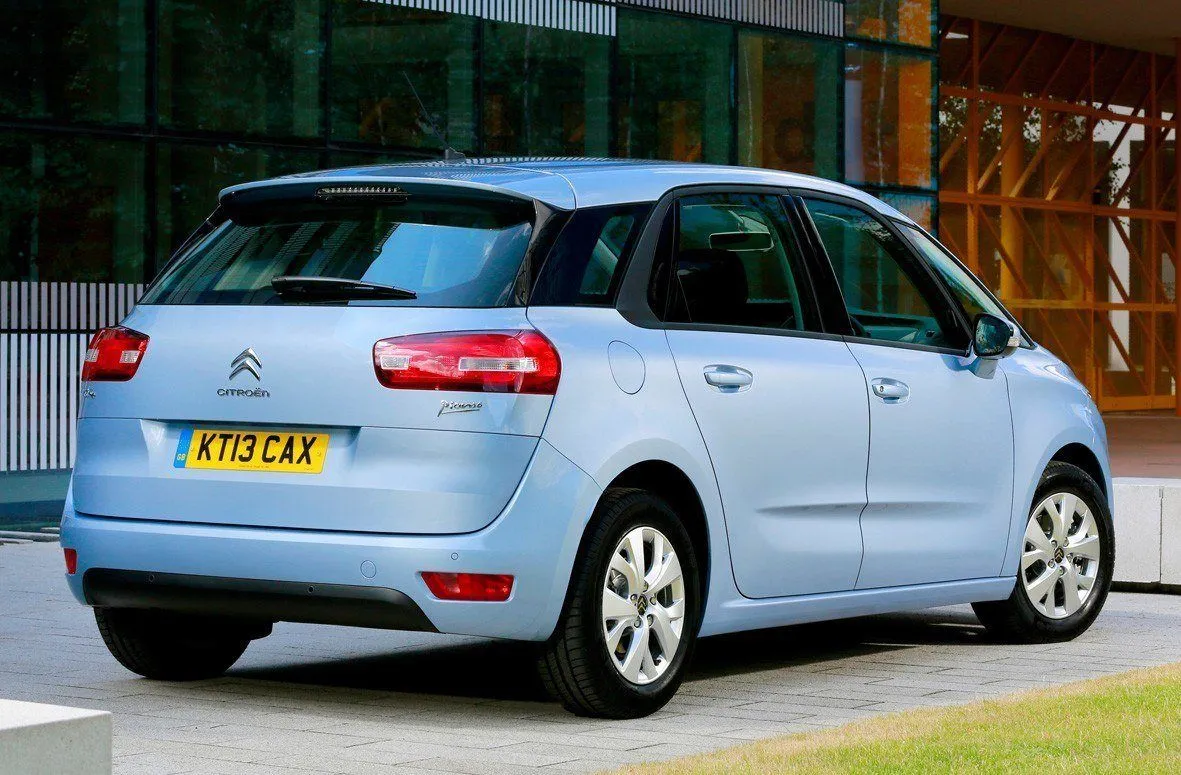
Go for the 1.2 Puretech with the EAT6 automatic gearbox, and you should see 43 mpg in real-world driving, which is far more economical than the 28 mpg you'll see with the 1.6 THP EAT6. If it's outright economy you want, the 1.6-litre diesel is the best choice. There are various versions, but most will see more than 50 mpg.
Citroen C4 Picasso reliability and warranty
Being a fairly old car now, any manufacturer warranties will have expired unless extended. Recalls regarding fuel leaks on cars built between 4 January and 15 July 2014 were distributed. This was a dangerous defect that could lead to a fire. Starter motors were also an issue on cars built between 28 June and 15 July 2016.
Similarly, airbags may not have deployed on cars constructed between 10 and 14 November 2017, and some engines were known to fail in cars built between 1 October and 30 November 2017. Citroen made the bottom four in the latest Honest John Satisfaction Index.
Citroen C4 Picasso insurance groups and costs
The cheapest Picasso to insure was, and still is, the 1.6 VTi VTR at group 14. Topping the charts is the Flair BlueHDi 150 EAT6 auto at group 25. The 1.6 diesels range from group 15 to 20.
VED car tax: What is the annual road tax on a Citroen C4 Picasso?
Like insurance, road tax isn't an expensive affair with the Citroen C4 Picasso. The cheapest 1.6 BlueHDi 100 bhp VTR emits 99g/km of C02, meaning you'll pay just £20 per year when the new 1 April 2025 tax change kicks in.
The most expensive is the 1.6 VTi VTR, emitting 145g/km. Put simply, you'll be paying £215 per year.
Citroen C4 Picasso price
"The C4 Picasso is good value as a used family car, so long as you find one that's been looked after and properly maintained."
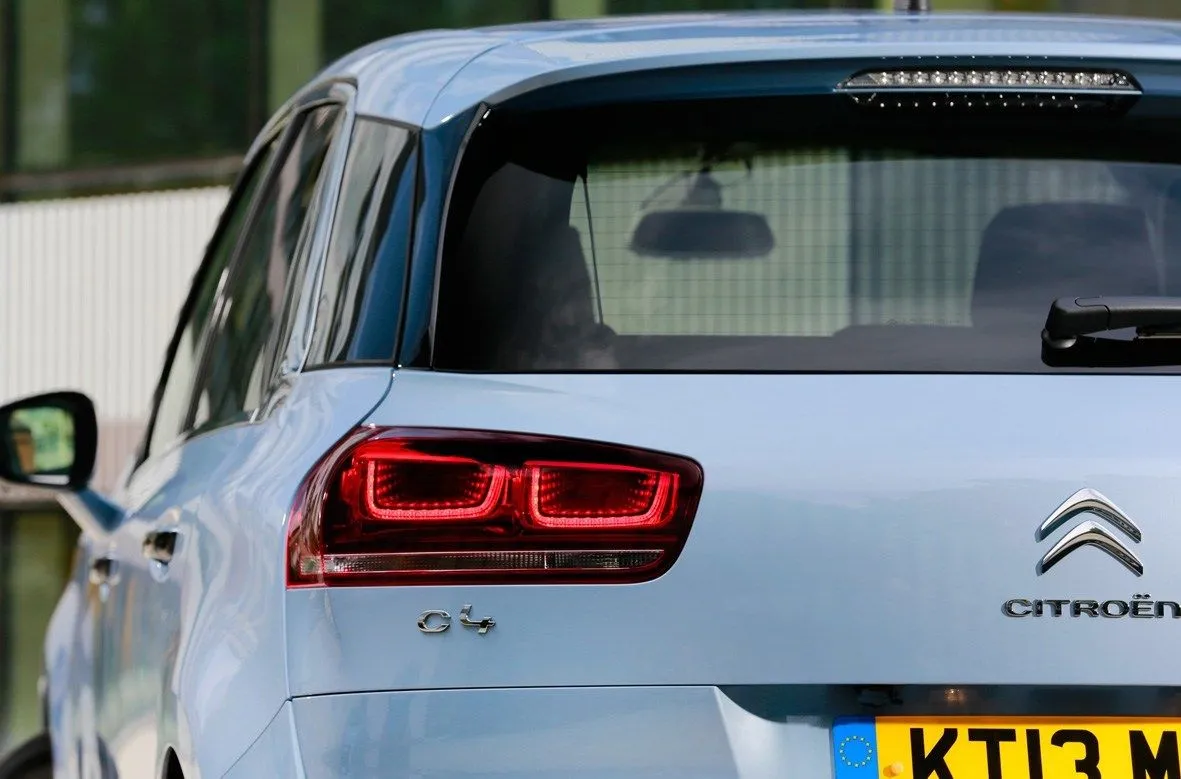
Prices dip to £1,400, but these are often for CAT N and S cars. C4 Picassos are, realistically, priced from £2,000. This gets you an early 2013/2014 car with around 100,000-150,000 miles on the clock.
Newer 2017 and 2018 cars with around 9,000 miles are priced from £13,200. But, you can grab a low-mile car for under £12,000.
Trim levels and standard equipment
The entry-level VTR came with 16-inch alloys, cruise control and dual-zone climate control. A step up was the VTR+, offering auto lights and wipers, rear parking sensors and DAB radio. Exclusive was second from the top and provided a 12-inch digital instrument panel, 17-inch alloys and a reversing camera. And finally, was Exclusive+. This range-topping guise had 18-inch alloys, adaptive cruise control and blindspot monitoring.
Around 2016, these trims were dropped in favour of the Touch Edition, Feel and Flair. Most carried the same equipment as before, but with a few added extras and improvements.
Ask the heycar experts: common questions
Do Citroen still make the Citroen C4 Picasso?
Was the Citroen C4 Picasso a seven seater?
Was the Citroen C4 Picasso a hybrid?
Get our latest advice, news and offers
Keep me updated by email with the latest advice, news and offers from heycar.
By submitting you agree to our privacy policy
